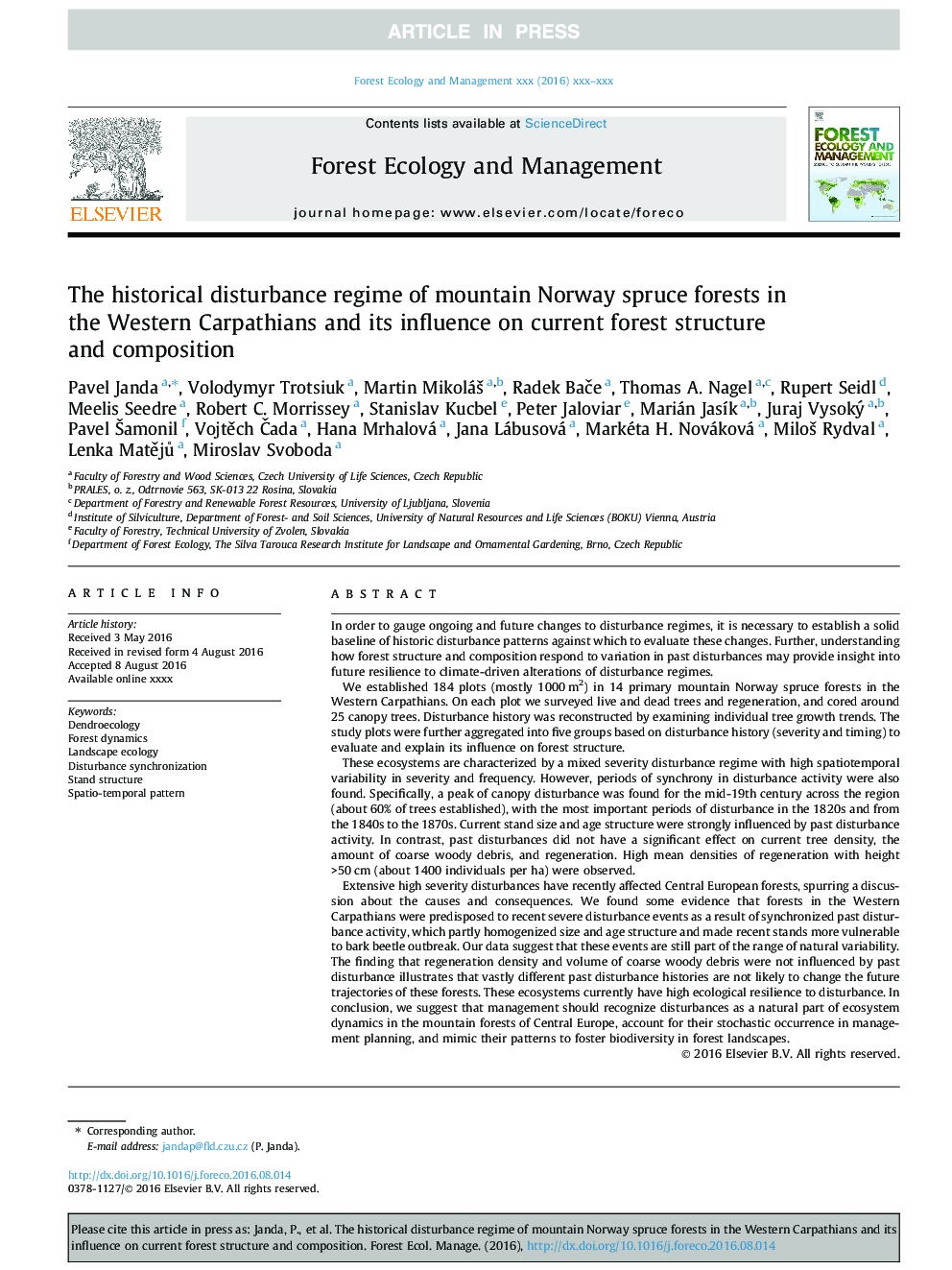| Article ID | Journal | Published Year | Pages | File Type |
|---|---|---|---|---|
| 4759533 | Forest Ecology and Management | 2017 | 12 Pages |
Abstract
Extensive high severity disturbances have recently affected Central European forests, spurring a discussion about the causes and consequences. We found some evidence that forests in the Western Carpathians were predisposed to recent severe disturbance events as a result of synchronized past disturbance activity, which partly homogenized size and age structure and made recent stands more vulnerable to bark beetle outbreak. Our data suggest that these events are still part of the range of natural variability. The finding that regeneration density and volume of coarse woody debris were not influenced by past disturbance illustrates that vastly different past disturbance histories are not likely to change the future trajectories of these forests. These ecosystems currently have high ecological resilience to disturbance. In conclusion, we suggest that management should recognize disturbances as a natural part of ecosystem dynamics in the mountain forests of Central Europe, account for their stochastic occurrence in management planning, and mimic their patterns to foster biodiversity in forest landscapes.
Related Topics
Life Sciences
Agricultural and Biological Sciences
Ecology, Evolution, Behavior and Systematics
Authors
Pavel Janda, Volodymyr Trotsiuk, Martin MikoláÅ¡, Radek BaÄe, Thomas A. Nagel, Rupert Seidl, Meelis Seedre, Robert C. Morrissey, Stanislav Kucbel, Peter Jaloviar, Marián JasÃk, Juraj Vysoký, Pavel Å amonil, VojtÄch Äada, Hana Mrhalová,
